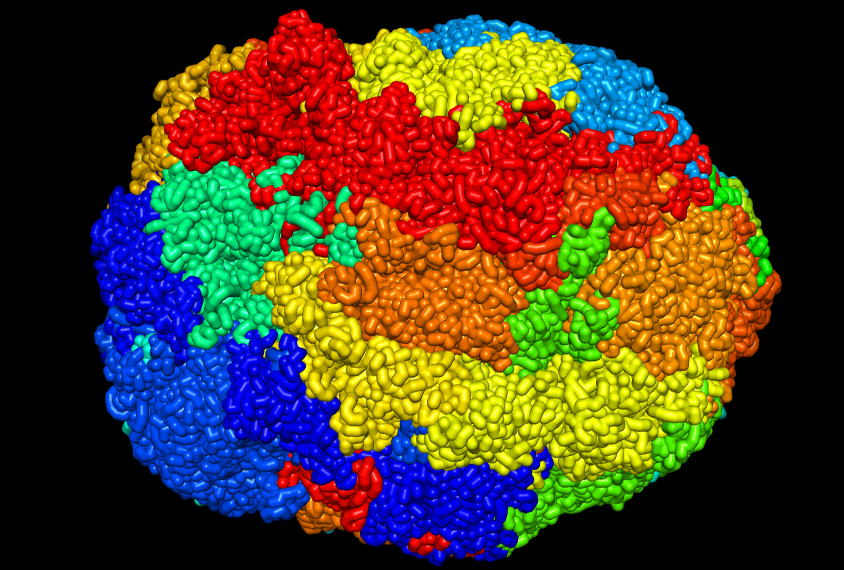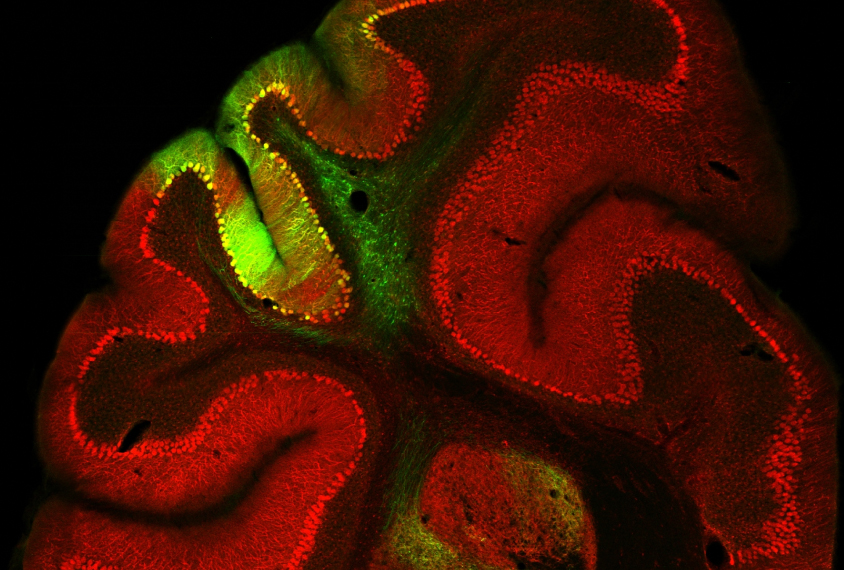Cerebellum
Cerebellar circuit may convert expected pain relief into real thing
The newly identified circuit taps into the brain’s opioid system to provide a top-down form of pain relief.

Cerebellar circuit may convert expected pain relief into real thing
The newly identified circuit taps into the brain’s opioid system to provide a top-down form of pain relief.
Mutation in top autism-linked gene may alter eye reflex
The discovery could help clinicians diagnose children who carry mutations in the gene, called SCN2A, and gauge their responses to potential therapies.

Mutation in top autism-linked gene may alter eye reflex
The discovery could help clinicians diagnose children who carry mutations in the gene, called SCN2A, and gauge their responses to potential therapies.
Expanding ‘little brain’ may have powered dinosaur flight
The cerebellum swelled in size before flight evolved among modern birds’ dinosaur ancestors, according to a new comparison of fossilized skulls and living birds.

Expanding ‘little brain’ may have powered dinosaur flight
The cerebellum swelled in size before flight evolved among modern birds’ dinosaur ancestors, according to a new comparison of fossilized skulls and living birds.
Null and Noteworthy: Busting biomarkers; going after GABA; reproducibility illusion
In this edition of Null and Noteworthy, scientists find little to be excited about in research on biomarkers for neurodevelopmental conditions.

Null and Noteworthy: Busting biomarkers; going after GABA; reproducibility illusion
In this edition of Null and Noteworthy, scientists find little to be excited about in research on biomarkers for neurodevelopmental conditions.
Flexible genomic architecture undergoes major redesigns during cerebellum development
A new atlas reveals how the structural shake-ups within a cell’s genome differ by cell type and brain region over time.

Flexible genomic architecture undergoes major redesigns during cerebellum development
A new atlas reveals how the structural shake-ups within a cell’s genome differ by cell type and brain region over time.
Null and Noteworthy: Brain aging, oxytocin pathways, biomarker back-up
Null and replicated results in this month’s newsletter tackle aging, a purported pathway for oxytocin’s effects on autistic people, and a possible autism biomarker.

Null and Noteworthy: Brain aging, oxytocin pathways, biomarker back-up
Null and replicated results in this month’s newsletter tackle aging, a purported pathway for oxytocin’s effects on autistic people, and a possible autism biomarker.
Mouse study links dopamine in cerebellum to social behavior
The signaling molecule’s social role in the ‘little brain’ involves Purkinje neurons in the Crus I and Crus II regions, a new study reveals.

Mouse study links dopamine in cerebellum to social behavior
The signaling molecule’s social role in the ‘little brain’ involves Purkinje neurons in the Crus I and Crus II regions, a new study reveals.
Null and Noteworthy: INSAR keynote, typical cerebellums, social subdomains
In this edition, researchers sink a purported link between cerebellar volume and autism and buoy a theory about measuring social behaviors.

Null and Noteworthy: INSAR keynote, typical cerebellums, social subdomains
In this edition, researchers sink a purported link between cerebellar volume and autism and buoy a theory about measuring social behaviors.
Mouse models mirror cerebellum patterns seen in autism
Animals with different autism-linked mutations share disruptions to the mTOR signaling pathway, pointing to a potential molecular mechanism for the atypical cerebellar development seen in some autistic people.

Mouse models mirror cerebellum patterns seen in autism
Animals with different autism-linked mutations share disruptions to the mTOR signaling pathway, pointing to a potential molecular mechanism for the atypical cerebellar development seen in some autistic people.
Mice missing key clock gene show autism-like traits
A new study is the first to link social, repetitive and motor behaviors to mutations in BMAL1, which regulates the body’s circadian rhythms.

Mice missing key clock gene show autism-like traits
A new study is the first to link social, repetitive and motor behaviors to mutations in BMAL1, which regulates the body’s circadian rhythms.
Explore more from The Transmitter
New connectomes fly beyond the brain
Researchers are mapping the neurons in Drosophila’s ventral nerve cord, where the central nervous system meets the rest of the body.

New connectomes fly beyond the brain
Researchers are mapping the neurons in Drosophila’s ventral nerve cord, where the central nervous system meets the rest of the body.
Building an autism research registry: Q&A with Tony Charman
A purpose-built database of participants who have shared genomic and behavioral data could give clinical trials a boost, Charman says.

Building an autism research registry: Q&A with Tony Charman
A purpose-built database of participants who have shared genomic and behavioral data could give clinical trials a boost, Charman says.
New ‘decoder’ tool translates functional neuroimaging terms across labs
The compendium of brain-parcellation atlases makes it possible to compare large-scale network data, which often involves different and overlapping network names.

New ‘decoder’ tool translates functional neuroimaging terms across labs
The compendium of brain-parcellation atlases makes it possible to compare large-scale network data, which often involves different and overlapping network names.